Passengers (2011) 214.5 million Began operation April 6, 1899 Routes 50 | Propulsion system(s) Horses Track gauge 1,524 mm (5 ft) | |
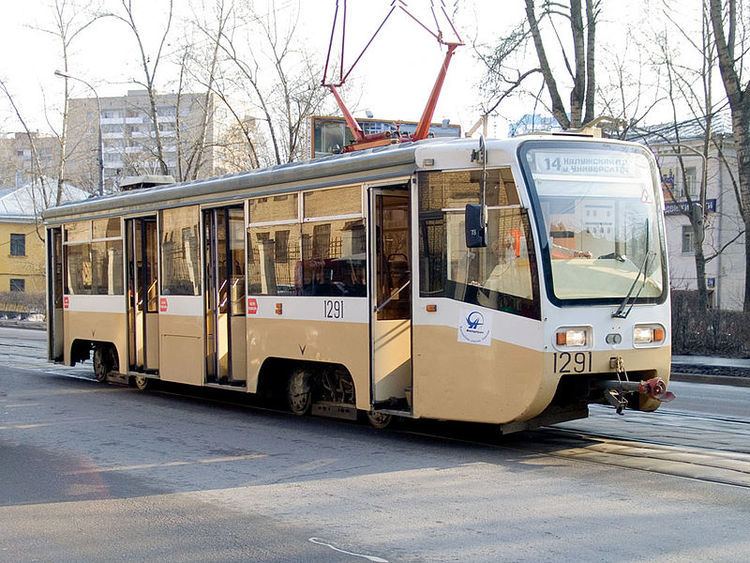 | ||
The Moscow tramway network, which is divided into two sub-networks, is a key element of the public transport system in Moscow, the capital city of Russia. Opened in 1872, it has been operated since 1958 by Mosgortrans, a state-owned company.
Contents
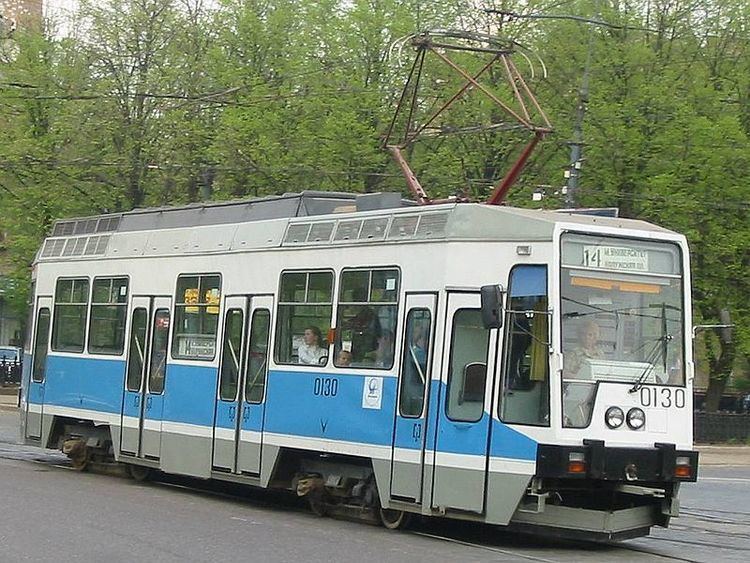
Overview

The two sub-networks had a combined total route length of 181 km (112 mi), making the whole network the fourth largest in the world, after the networks in Melbourne, St. Petersburg and Berlin.
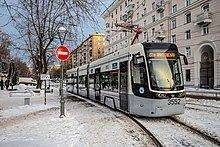
The tram is historically the second type of urban passenger transport in Moscow, the successor of the Konka (horse-driven tram). However, the presence in Moscow by the beginning of the 20th century horse-railways hindered the development of tram lines. For the laying of tram lines, it was necessary first to free the roads from horse tracks. In 1901, the council purchased the first competition of the Belgian joint-stock company. When, in 1903, came a period of redemption horse-drawn railway the second Belgian joint stock company, the Duma is not solved, as, according to N. I. Astrov: "In Russia we have not experienced builders and engineers". In November 1905, immediately after the events of October elected a new mayor Nikolai Guchkov. Its launching coincided with the revolutionary actions of workers of Moscow in November–December 1905. As soon as the life in the town had returned to normal, Nikolai Ivanovich ordered to proceed with the laying of tram tracks. In February 1907, a movement began in the Myasnitska street, the Sretenka street and the Lubyanka street, from the Passion of the monastery Dmitrovka and further the Sretenka and Myasnitskaya. The first electric tram routes linked the outskirts of the Garden ring with the center and mainly repeated konechnye.

May 18, 1910 the city council on the proposal of N. I. Guchkov made a decision about carrying out in 1912 in Moscow, the congress of tram companies.

To the 1910 years the dense network of lines was observed in the western part of the centre with the formation of arcs on the Garden and Boulevard rings. In 1918 the total length of tram lines in the city amounted to 323 km (201 mi) In 1926 the length of track grew to 395 km (245 mi) in 1918, there were 475 cars, and in 1926 — 764 . Average speed of trams increased from 7 km/h (4 mph) in 1918 to 12 km/h (7 mph) in 1926.
Tram network of Moscow in the early 1930s
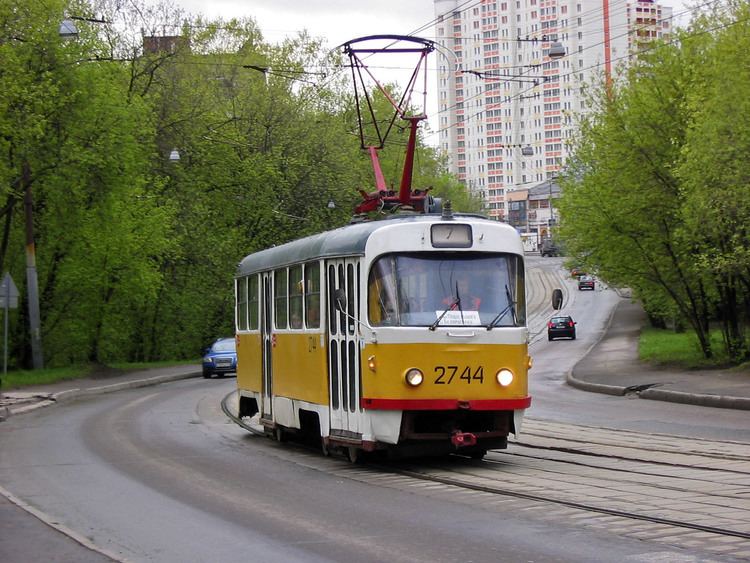
The apogee of the development of the tram network in Moscow — early 1930s, when it covered both rings (the Boulevard and the Garden) and all connecting streets, gas lines were laid and on the outskirts. In 1934, when the streetcar was the dominant mode of transport to reach the maximum transport passengers (tram, on average, they used 2.6 million people a day, when the city had a population of approximately 4 million). More radical changes took place in the 1940s, when the tram routes were replaced by trolleybus in the western part of the Boulevard ring and removed from the Kremlin. With the development of metro in the 1950s was closed part of the lines leading to the suburbs. Also came to naught freight.
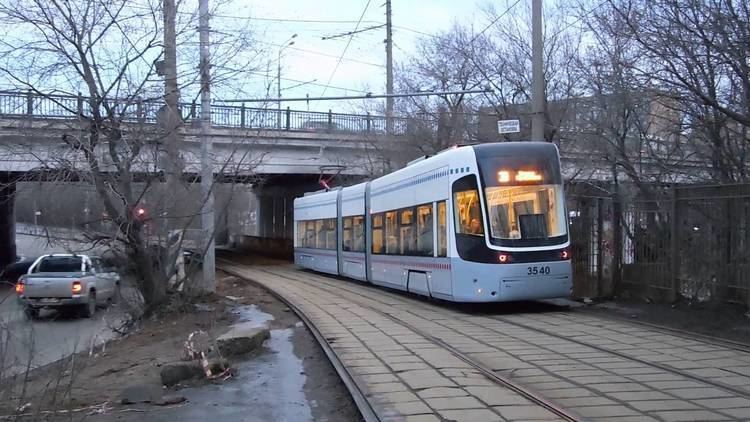
In 1958 by the decision of the Moscow city tram and trolleybus administration amnd Management of passenger transport were merged into the Department of Passenger Transport of Moscow (UPTM), it turned out all three types of surface public transport: bus, trolleybus and tram.
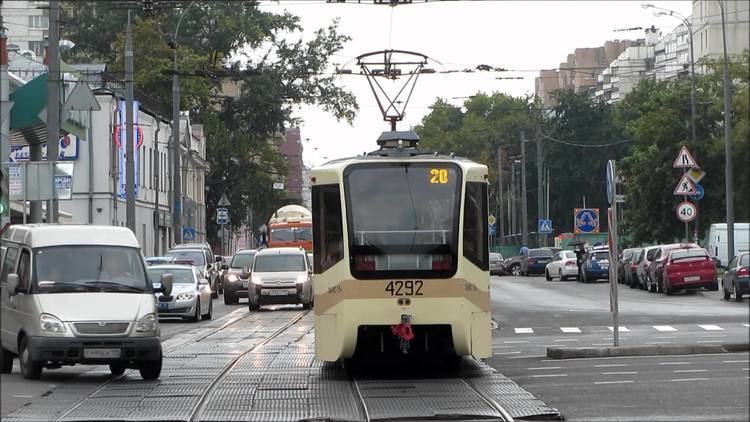
In the 1960s and 1970s, tram lines were finally eliminated in the western part of the city and torn after the first second "tram ring" around the Garden. However, new lines were laid in the then deprived areas metro: Medvedkovo Chertanovo, Perovo and Novogireevo. After the closure of the lines between the street lower maslivka and Tikhvin in 1965 and on Bolshaya Gruzinskaya street in 1973 from the General urban tram network was separate network of the Krasnaya Presnya tram depot on the north-west of the city. Since the mid-1990s began a new wave of removing the tram lines, mainly on major highways, adjacent to the center. In 1995, the company closed the line for the Prospect of Peace, then at the Bottom Maslovka due to the construction of the 3rd ring road. For the same reason in the early 2000s, removed the rails on the Treadmill at the street and near the metro station "Ulitsa 1905 goda", as well as on the street Dvintsev. In 2004 in connection with forthcoming reconstruction closed by the movement on the Leningrad prospect. In 2008 closed the line on Forest street and Volokolamsky highway. The length of the lines in 1989–2004 was reduced from 460 to 420 km (261 mi) (high in the 1940s was 560 km). In the late 1990s used the tram every day, about 150 thousand people (for comparison, in 1990 — more than 800 thousand). From 30–31 August 2013 in the framework of the experimental introduction of night routes of public transport route № 3 is translated to round-the-clock work.
List of routes
А. Chistye prudy underground station – Kaluzhskaya Square
Б. Sokolnicheskaya Zastava – Kursky Railway Station
1. Moskvoretsky Market – Ulitsa Akademika Yangelya (Academic Yangel St.)
2. Semyonovskaya underground station – Children's sanatorium 3. Chistye prudy underground station – Balaklavsky Prospect
4. Bulvar Rokossovskovo underground station – Bulvar Rokossovskovo underground station (ring)
6. Sokol underground station – Bratsevo
6к. Vostochny most (Eastern Bridge) – Bratsevo
7. Bulvar Rokossovskovo underground station – Novoslobodskaya underground station
8. Novokonnaya Square – 3rd Vladimirskaya St.
9. MIIT – Byelorusskaya underground station
10. Shchukinskaya underground station – Ulitsa Kulakova (Kulakov St.)
11. Ostankino – 16th Parkovaya St.
12. Proezd Entuziastov – 2nd ulitsa Mashinostroyeniya (2nd Machinbuilding St.)
13. Kalanchovskaya St. – Children's sanatorium
14. Kaluzhskaya Square – Universitet underground station
15. Sokol underground station – Tallinskaya Str.
